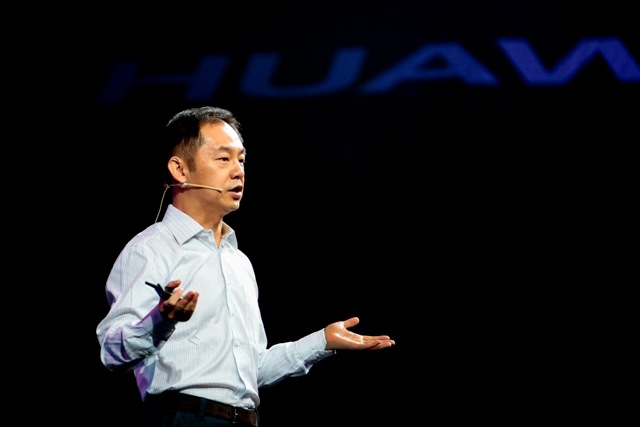Huawei Unveils Developer Enablement Plan and Offers US$1 billion to Support Developers
[Shenzhen, China, October 19, 2015] Huawei has used its first Huawei Developers Congress (HDC) to announce its open ICT developer ecosystem strategy and a Development Enabler Plan which will make up to US$1 billion available to support developers.

The first Huawei Developers Congress (HDC)
"Huawei has focused on ICT infrastructure, opened up its innovative and leading ICT solutions to developers, and built an open environment and enablement platform for the carrier and enterprise markets,” said Ryan Ding, Huawei’s Executive Director and President of Products & Solutions.

Ryan Ding, Huawei’s Executive Director and President of Products & Solutions, gives a speech at the HDC
“The aim is to help developers create innovative services and rapidly respond to customers' business needs. Over the next five years, Huawei will invest US$1 billion to implement its Developer Enablement Plan, build a developer enablement platform, and jointly innovate with developers."
Ding also noted that Huawei has opened up to its developers cutting-edge technologies such as cloud computing, Big Data, IoT, mobile broadband, SDN, and BYOD. In addition to technical cooperation and talent cultivation, Huawei will forge business partnerships with its developers. Huawei announced that the company will build a developer-centric platform called eSDK based on the LEADS concept. This platform will help developers accelerate technological innovation and increase their efficiency in developing differentiated solutions. LEADS is the acronym for Lab as a Service, End-to-end, Agile, Dedicated, and Social.
“Huawei will provide Lab as a Service based on cloud, end-to-end development resources, agile development processes and tools, dedicated experts who offer online support 24/7, and a Developer Zone that supports social engagement among partners,” said Evan Xiao, President of Huawei P&S Strategy and Business Development.
Xiao also provided details on the five initiatives which are part of the company’s Developer Enablement Plan:
- Innovation fund: Huawei will offer equipment, funds, and expertise for partners to develop innovative joint solutions.
- Development support: Huawei will build an open platform and remote labs to enable developers to focus on their business and develop solutions efficiently.
- Huawei certification: Huawei will certify the development capabilities and solutions of developers.
- Talent training: Huawei will offer training to equip developers with capabilities in R&D, sales, and delivery.
- Developer Marketing Fund: Huawei will offer funds to support solution ecosystem building, innovative solution marketing, and sales incentives of developers.
During the Plenary Session, Huawei highlighted success stories with partners and its open capabilities in areas such as public cloud, Big Data, IoT, SDN, agile network, eLTE, and BYOD. Huawei's Enterprise Cloud includes 19 open cloud services in 10 categories, including storage, networking, security, and data analytics. Huawei and Sobey have explored innovative ways to produce high-definition media content. Huawei has also helped Hunan TV deploy a leading convergent media cloud.
On its IoT connection management platform, Huawei has opened APIs for networks, security, and data. Huawei also provides development support involving agents, SDKs, Liteos, and chips for devices and access gateways. These products are ideal for IoT app developers to access devices quickly, deliver unique user experiences, guarantee connection security, and acquire data on-demand.
Huawei's open SDN controller enables F5 to provide network performance optimization, security protection, and other advanced enterprise applications, which improve the service experience of its enterprise customers.
Beiming Software has developed a mobile bus operation system with Huawei's agile network access routers and agile controllers. The system allows the company to centrally manage equipment, apps, and advertisements on buses, thus boosting the operating efficiency of bus systems.
Shanghai DS Communication Equipment Co. has developed a visual multimedia service scheduling system with Huawei's eLTE broadband trunking and multimedia management solutions. This system delivers multiple benefits — including faster response to customer requests, quicker resource scheduling, and more efficient emergency command — and has thus been deployed in many projects inside and outside of China.
At the Congress, ACNielsen, ShineMo, 91160.com, and other partners shared success stories on how they used operators' open capabilities (including user location data, conferencing, voice, and video communications) to make a difference in advertisement & marketing, mobile office, and online-to-offline e-commerce campaigns. During the two-day event, Huawei signed strategic cooperation agreements with partners such as Microsoft and Richfit. The company also launched joint solutions with partners including Infosys, iSoftStone, and Metis. In addition, several Huawei-led industry alliances, including FushionSphere alliance, OpenLife alliance, and BYOD alliance, discussed recent progress.
Developers also had an opportunity to see Huawei's 6000-square-meter innovation factory, to experience how Huawei's open ICT capabilities are applied in various industry scenarios to develop apps with Huawei's open APIs. Demos and hands-on practice showed guests the efficiency and convenience that open platforms and tools will bring.

